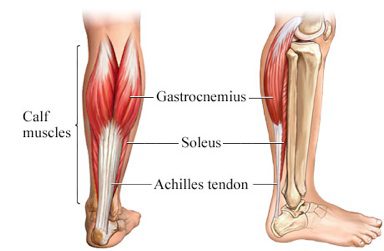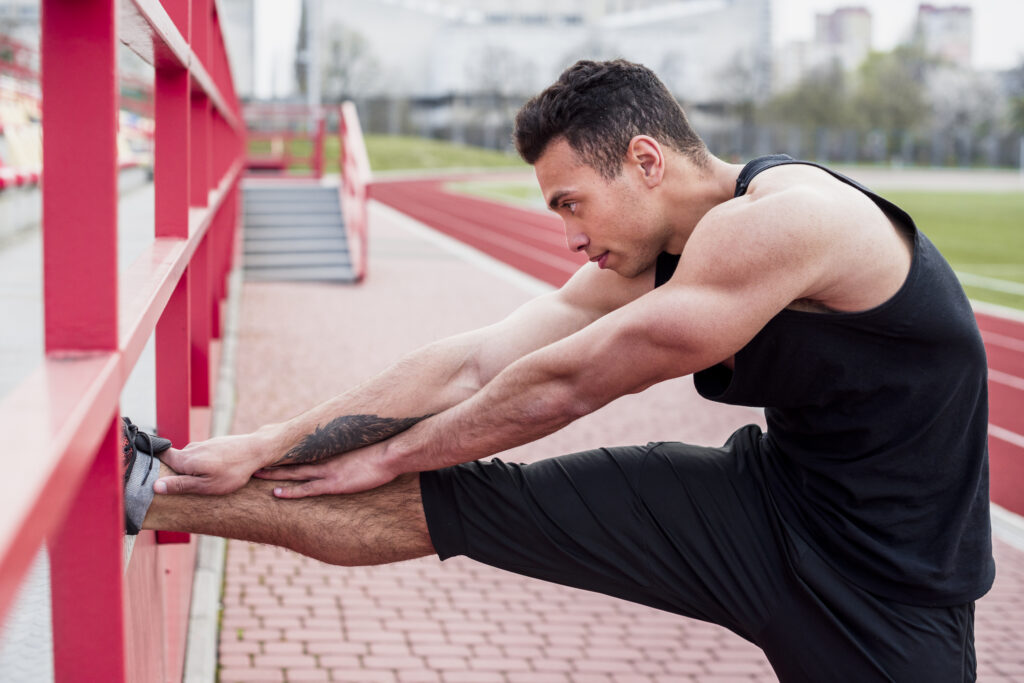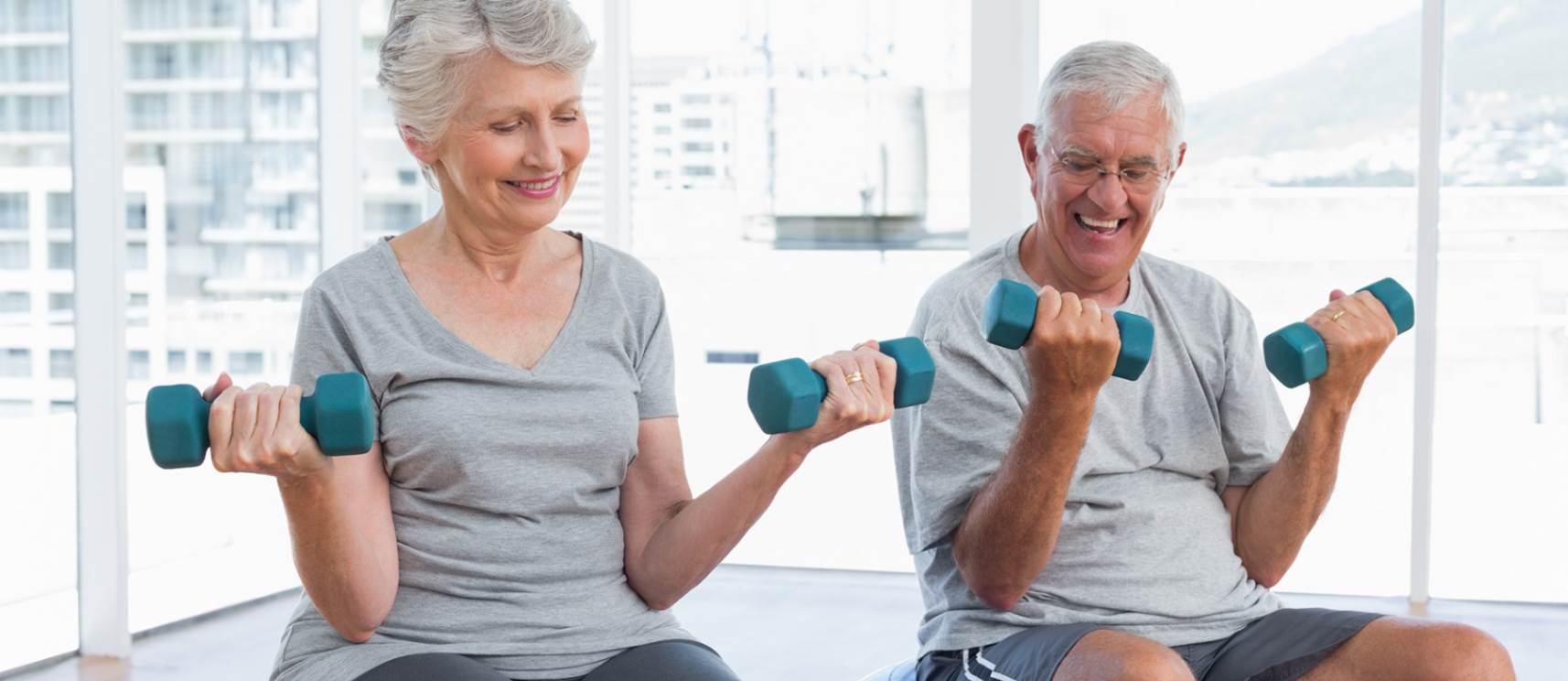So, you have tight calves… What now? Although having tight calves may not seem like the biggest problem, they can lead to more serious injuries over time, including shin splints, stress fractures in the feet and ankle issues.
The calf muscle is made up of 2 muscles. The gastrocnemius Is the large calf muscle that can be seen beneath the skin, and the soleus is a much smaller muscle that lies underneath the gastrocnemius. The muscles taper into the Achilles tendon which inserts into the calcaneus (heel bone).
The calf muscles function to pull the heel upwards during activities such as running, walking and jumping to allow forward movement. The importance of the calf muscles not just in sport and performance, but in everyday living means that we need to give our calves the TLC they need.
The Impact of Tight Calves on Mobility and Comfort
When calf muscles become tight, they can significantly affect your daily life by impairing mobility and comfort. This tightness can restrict the natural movement of your feet and ankles, leading to discomfort during activities like walking, climbing stairs, or running. It’s not just athletes who feel this impact; anyone can experience the repercussions of tight calf muscles in their daily activities.
Tight calves can also alter your gait, leading to compensatory movement patterns that put additional strain on other parts of your body such as your knees, hips, and lower back. This can increase the risk of injuries in these areas over time.
Furthermore, tight calves can limit your flexibility and range of motion, making it difficult to engage in activities that require bending or stretching your legs. This can be particularly problematic for athletes or individuals engaged in physical activities that demand a high degree of leg mobility.
Common Causes of Tight Calf Muscles
Tight calf muscles can happen for a variety of reasons. Overtraining, particularly in running and jumping sports, is a common cause. When you increase your training intensity or distance too quickly without adequate rest, it can overload the calf muscles, leading to tightness and discomfort.
Poor ankle mobility, specifically limited dorsiflexion, is another contributing factor. When the ankle doesn’t flex as it should, it puts additional strain on the calf muscles. This issue is often seen in individuals who have a history of ankle injuries or inherent limitations in their ankle movement.
Biomechanical issues, such as abnormalities in walking or running patterns, can also lead to tight calves. These issues might be subtle and not immediately noticeable but can significantly impact how the calf muscles work.
Overpronation or underpronation, where the foot rolls too much inward or outward, respectively, during walking or running, can also contribute to this issue.
Symptoms and Signs of Tight Calves
The symptoms of tight calves can vary depending on the severity of the tightness. Generally, you may feel a noticeable stiffness or aching in the calf muscles. Discomfort can range from a mild, nagging sensation to a more intense, cramp-like feeling. The tightness is often more pronounced after periods of rest, such as first thing in the morning, and may ease slightly with movement as the muscles warm up.
In more severe cases, tight calves can lead to cramps or spasms, which are sudden, involuntary contractions of the muscles that can be quite painful. You might also experience a decreased range of motion in your ankle, making it difficult to flex your foot upwards. This limitation can affect your ability to perform activities that require ankle mobility, such as climbing stairs or running.
It’s also not uncommon for individuals with tight calf muscles to alter their walking pattern, either consciously or unconsciously, to minimise discomfort. This can lead to compensatory changes in the biomechanics of the lower body, potentially causing issues in other areas like the knees, hips, or lower back.
Effective Solutions and Stretches for Tight Calves
Dealing with tight calves requires a multi-angled approach that includes stretching, strengthening, and possibly professional intervention. Stretching exercises are fundamental in alleviating tightness.
- The basic calf stretch, where you extend your leg and gently pull your toes towards you, targets the larger gastrocnemius muscle.
- The soleus stretch, which focuses on the smaller muscle underneath, is also essential. Incorporating a stretch on a step where you let your heels drop below the level of the step can further aid in loosening tight muscles.
- Foam rolling is another effective technique. Rolling out your calves on a foam roller helps to break up muscle knots and increase blood flow to the area, aiding in recovery and flexibility.
- A foam roller stretch, where you place your ankles over the roller and gently roll back and forth, can provide targeted relief.
Frequency and consistency in stretching are key. It’s important to integrate these stretches into your daily routine, especially after exercise when your muscles are warm. For those whose tight calves stem from large amounts of exercise, regular stretching over time can significantly alleviate the issue.
In addition to stretching, calf strengthening exercises help build strength and stability, which can prevent future tightness. It’s important to note that if underlying issues like poor ankle range or biomechanical problems are causing tightness, professional assessment and treatment are recommended.
Preventing and Managing Tight Calf Muscles
Regular stretching is one of the most effective ways to prevent calf muscles from becoming tight. Incorporating stretches into your daily routine, especially after physical activity, can maintain and improve flexibility in the calf muscles.
Proper training and exercise techniques are also crucial. Gradually increasing the intensity and duration of exercises, particularly in running-based sports, can help prevent overloading the calf muscles. Paying attention to your body’s signals and giving yourself adequate rest and recovery time is equally important.
Finally, seeking professional advice is highly recommended, especially if you’re experiencing persistent tightness or discomfort. A qualified physiotherapist can provide targeted advice and treatment options tailored to your specific needs. They can also help identify any underlying biomechanical issues that may be contributing to the problem and suggest appropriate corrective measures.
Book an appointment at Coast Sport today via the button below!







 Helping the Central Coast Feel Well, Move Well and Perform Well!
Helping the Central Coast Feel Well, Move Well and Perform Well!